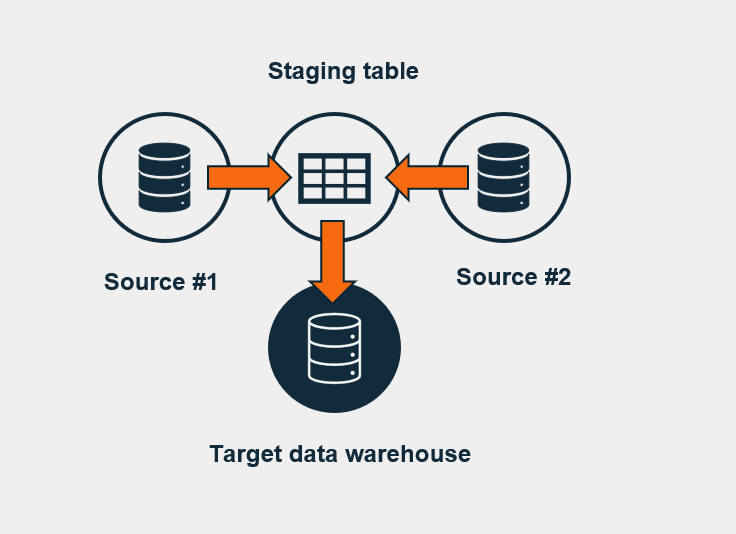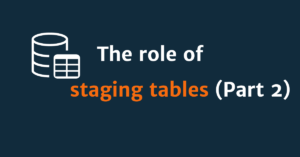When loading data into a database, staging tables are often utilised. Data is typically loaded into one or more staging tables, transformed, and then moved to the destination tables. These temporary tables act as caches during the data processing workflow, particularly within the ETL process. Consequently, the data in these staging tables is transient. Oracle Database 23c introduces the FOR STAGING clause in the CREATE TABLE command, enabling the creation of a variation of heap tables optimised for fast data ingestion. In this article, you will learn what staging tables are, their benefits, and how to use them effectively.
What are staging tables?
Staging tables are intermediate tables in which temporary data is stored during different phases of data processing. They serve as a bridge between an external data source (e.g. files, APIs or legacy systems) and the final destination (usually a permanent table in a database or data warehouse).

Purpose of staging tables
Staging tables serve several important purposes in the data warehousing and data integration process:
- Cleansing data: staging tables are used to cleanse and transform data before it is loaded into the target data warehouse or data mart. This includes tasks such as identifying and correcting errors, handling missing values and standardising data formats.
- Data transformation: Staging tables can be used to transform data into the format and structure required for the target data warehouse or data mart. This can include aggregating data, calculating new metrics or creating derived data elements.
- Data validation: Staging tables can be used to validate data against business rules and constraints before it is loaded into the target data warehouse or data mart. This ensures that only high-quality data is used for analyses and reports.
- Data validation: Staging tables can be used to validate data changes before they are transferred to the target data warehouse or data mart. This can be helpful to track data provenance and identify the source of data errors.
Advantages of using staging tables
The use of staging tables offers several advantages for data warehousing and data integration projects:
- Isolation of resources: by using dedicated storage space for staging tables, you avoid conflicts with other applications that rely on the tempdb system database. This improves overall performance.
- Extended lifetime: In contrast to temporary tables, staging tables have a longer lifetime. They persist beyond the initial loading of the data and are therefore suitable for multi-stage ETL processes.
- Improved data quality: Staging tables help improve data quality by providing a staging area for cleansing and transforming data before it is loaded into the target data warehouse or data mart.
- Reduced risk of errors: Staging tables help reduce the risk of errors by providing a separate environment for testing data transformations and validations before they are applied to production data.
- Simplified data management: Staging tables simplify data management by providing a centralised location for managing and tracking data changes.
- Improved data security: Staging tables can help increase data security by isolating sensitive data from the production data environment.
How to implement staging tables?
Implementing staging tables involves several important steps:
- Designing the staging schema: this involves defining the structure of the staging tables based on the data sources and the transformations required. The schema should be flexible enough to accommodate changes in the data structure.
- ETL process design: The ETL process should be designed to extract data from various sources, load it into the staging tables, perform the required transformations and then load it into the final target tables. Tools such as SQL Server Integration Services (SSIS) or Apache NiFi can be useful for this.
- Monitoring and maintenance: Regular monitoring of the staging tables is important to ensure that they do not consume too much storage space. Maintenance tasks such as cleaning up old data and optimising table indices should be part of the routine.
Conclusion
Staging tables are essential for efficient and accurate data management in modern databases. They provide a controlled environment for purging, transforming and loading data and ensure that the final database remains consistent and performs well. In the second part, we will look at staging tables at work and show the best practices of using them.
If you want to optimise your database management processes, consider integrating staging tables into your workflow. Contact us for expert advice and customised solutions for your specific requirements.
Resources:
Staging Tables in Oracle Database 23ai
Staging Tables: A Complete Guide



